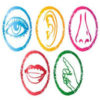We don’t have to be taught to understand everything we experience. In fact, they have confirmed that some key values are held and displayed even before an infant reaches verbal ability, like cooperation being good and hurtful interference being bad. They don’t have to be taught these things. In my own case, I quickly took to the concept of rules so I required even less direct training. It was a way to compensate for the otherwise very confusing nature of human behaviour and interaction, but these understandings are not strictly the product of thought as we commonly understand it.
Really large things provoke a defensive response, a hesitancy. Instinctively, without being told, we understand that large things are obstacles, more powerful than we are, and to either be worked with or worked around. This manifests even in adult understanding. Most people learn to work with the laws, to at least a minimal degree, and others learn to work around them. But very few embrace anarchy, and even in that case they really seek to replace one social order with another, seeking the support of like minds. But we respond this way with animals, people, institutions, everything. Our minds don’t do very well in making abstract distinctions.
We only have a limited set of categories we can sort things into, and we do so naturally, of necessity. The five senses are five categories, and in fact, it’s even been established that we understand our individual senses not by themselves, but by a process of overlap. Your ability to understand sound is limited if you can’t also look at what’s making the sound. What do you think?
Yes, it’s funny to see people trying to identify a sound when they can’t see the source.
Fireworks can sound like gun shots.
We do a lot of verifying that way.
Your sense of taste is even influenced by what you are looking at. Your visual centre is the largest part of your brain, and how would you describe our, oh so common as to be almost universal, metaphors? Are metaphors really anything other than visualizations?
Visualization and association? Indeed. Metaphor is literally universal among humans, and as far as we know it may be present in other animals as well. What differs is not the presence of metaphor, but how it is structured in each culture, and we structure our metaphor like we structure our sense of direction.
Reminds me of how migrating birds can visualize their route. They use our roads and streams and things as guides. They only need to see it once to remember it. They do, and auroral shifts they can detect in the atmosphere as well. They see magnetic fields as chromatic shifts.
Your thoughts are welcome. Be well friends.
Travis Saunders
Dragon Intuitive
~science,mysticism,spirituality~



Leave a Reply